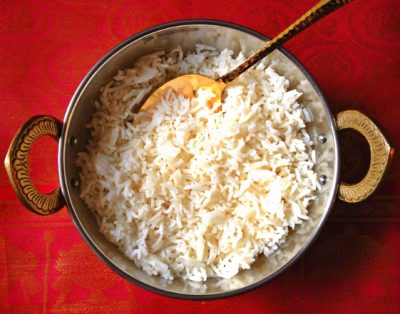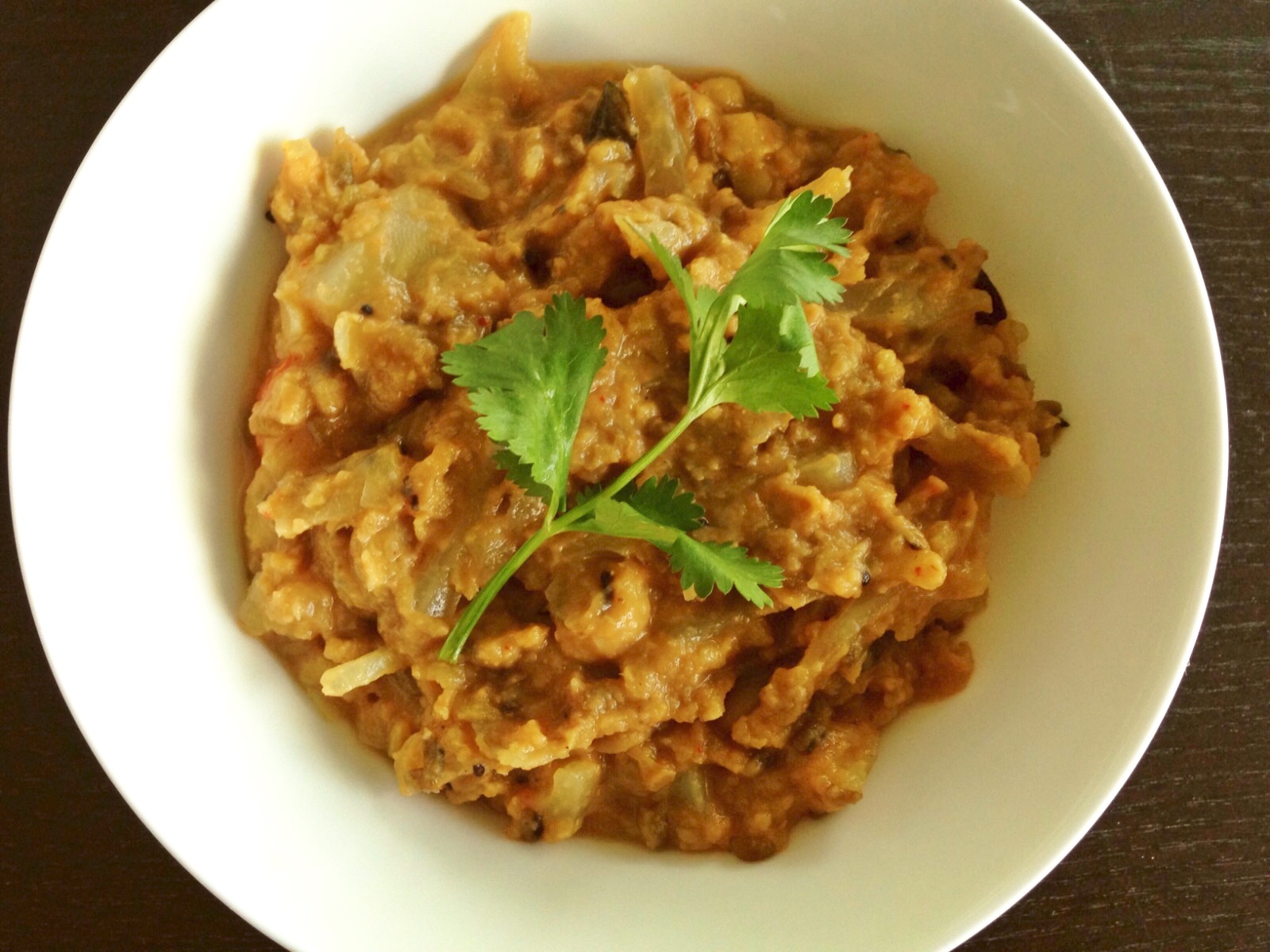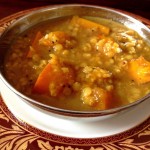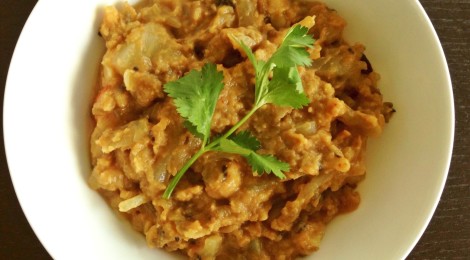
Karnataka-style Cabbage Kootu
Guest post by Big Apple Curry inspiration Geetha who lives in Canada, is my mom, and makes what we consider the best South Indian dishes!
‘Kootu’ is a hearty South Indian dish that combines lentils and vegetables. For me, it’s pure vegetarian comfort food. It’s not saucy like a curry, but is a thicker, richly-flavored dish that’s perfect for scooping up with warm flatbread or atop a fragrant bowl of steamed rice. Moderately spiced, tender cabbage is stewed with three different types of lentils; ground turmeric, coriander seeds and coconut give this dish a deep, earthy flavor, along with a bit of sharpness thanks to the red chillies. Kootu generally eaten with steamed rice or flatbreads, even with plain dosa. Kootu is often described as a Tamil dish but there are variations of the recipe across South India. Growing up in the Indian state of Karnataka close to Andhra Pradesh, I remember my mother would make Kootu for us every week after visiting the local farmers market, bursting with all varieties of fresh vegetables from nearby farms. You can make it anytime of year, with any combination of vegetables and lentils. Here in Canada, it’s especially nice in the Spring and Summer when fresh local produce is plentiful.

South India near the border of Karnataka and Andhra Pradesh (Photo source: Aravindgj)
For this recipe, I used cabbage and three different types of lentils. I chose cabbage mainly after seeing a bright, fresh green heads of cabbage in the grocery store, but you can make a Kootu with any combination of vegetables from green beans and carrots to squash. The difference between a Kootu and any other Indian-style vegetable-lentil dish is it doesn’t have a sour element that is common in many Indian dishes. This is because Kootu doesn’t include souring agents like tamarind, lemon juice, or even tomatoes. For this reason, it’s a good option if you don’t want to eat anything acidic.
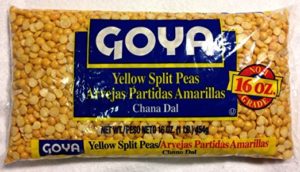
(Photo Source: Amazon.com)
You will need a trip to an Indian grocer, but if you don’t have time for that, you can simplify the vegetable-lentil combination and just opt for one of each. You can find yellow split peas (channa dal) readily in most supermarkets. Give it a try and let me know what you think by posting a comment below. Even better, include a photo of your Kootu!
Karnataka-style Cabbage Kootu
Serves 4
Ingredients
For Kootu
- 6 cups of water
- 1/3 cup uncooked toor dhal (lentils)
- 1/3 cup uncooked moong dhal (lentils)
- 1/3 cup uncooked channa dhal (or yellow split peas)
- 2 cups shredded cabbage
- 1 tablespoon canola oil
- 1/4 teaspoon turmeric
- 3/4 teaspoon salt (or to taste)
For Masala
- 2 tablespoons urad dhal
- 2-3 red chillies
- 1 tablespoon coriander seeds
- 1/2 teaspoon fenugreek seeds
- 2 tablespoons shredded coconut (dry or frozen)
For Tempering
- 1 tablespoon canola oil
- 1/2 teaspoon mustard seeds
- A few curry leaves (karipatha) (optional)
- A pinch of asafoetida (optional)
Preparation
Making the Masala
- Dry roast urad dhal, red chillies, coriander seeds and fenugreek seeds in a small frying pan on medium heat, for approximately 3-4 minutes until light brown and aromatic.
- Once it has cooled, transfer to a grinder or mortar and pestle and grind into a paste along with shredded coconut. Keep aside.
Making the Kootu
- Bring water to boil in a medium saucepan.
- Wash and rinse channa dhal (or yellow split peas) and add to the boiling water. Cook on medium heat for 10 minutes.
- Wash and rinse the toor dhal and moong dhal, and add to the channa dhal. Add oil and turmeric. Mix well and cook on medium heat for 20-30 minutes, until the dhals are almost cooked through.
- Add the cabbage and continue cooking for 5 minutes.
- When the dhals and cabbage are fully cooked, add the salt and ground masala and mix well.
- Continue to cook on medium heat for 5 minutes until the dhal, cabbage and masala mixture are well blended. Taste and adjust for salt, as desired.
Tempering
- In a small saucepan or frying pan, add canola oil and mustard seeds on low-medium heat. Cover with a tightly-fitted lid. After 5 minutes you will begin to hear the mustard seeds popping and sputtering (this sounds like little bits of popcorn popping). Once the popping has stopped, remove from heat and add curry leaves (optional) and asafoetida (optional).
- Add to the Kootu and mix well. Serve with rice or roti.
